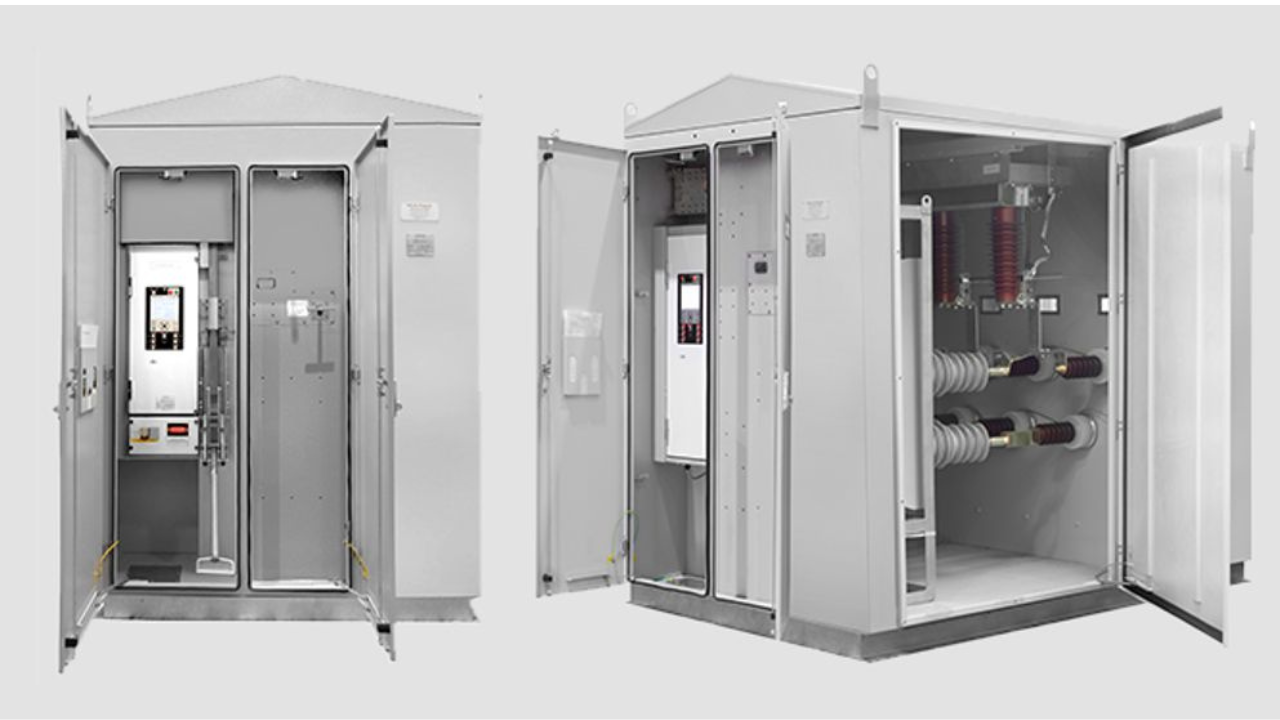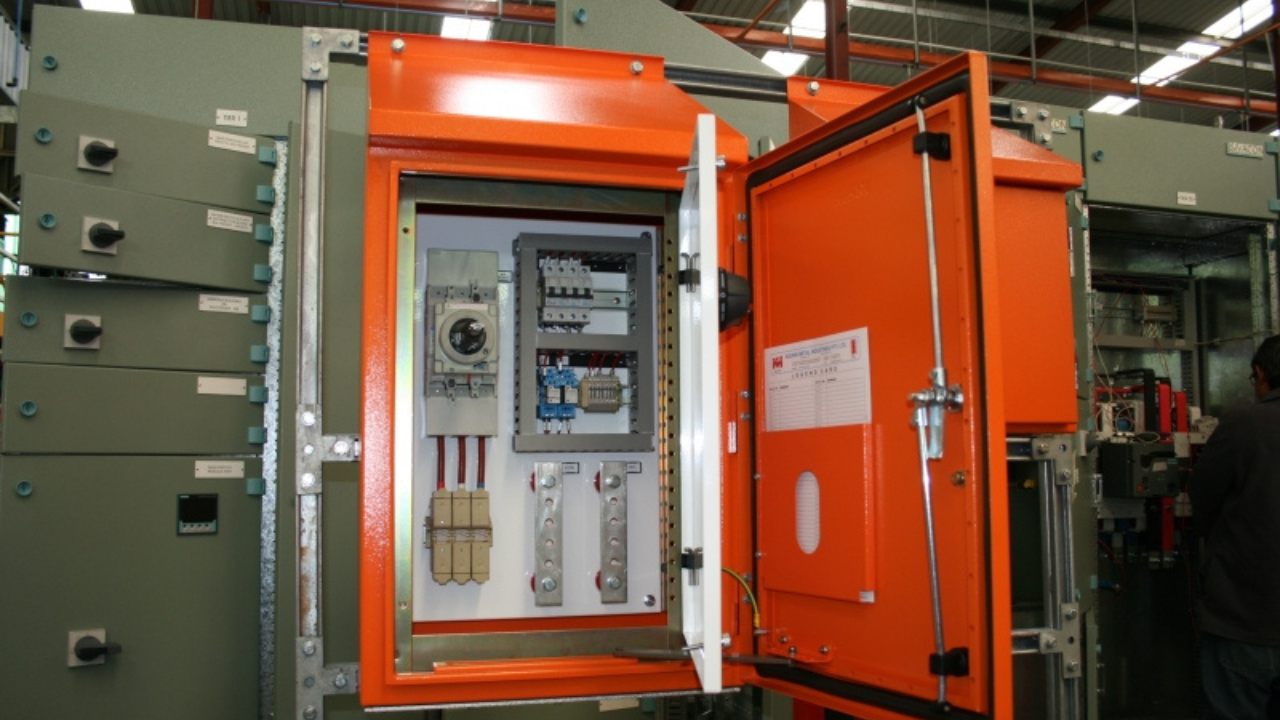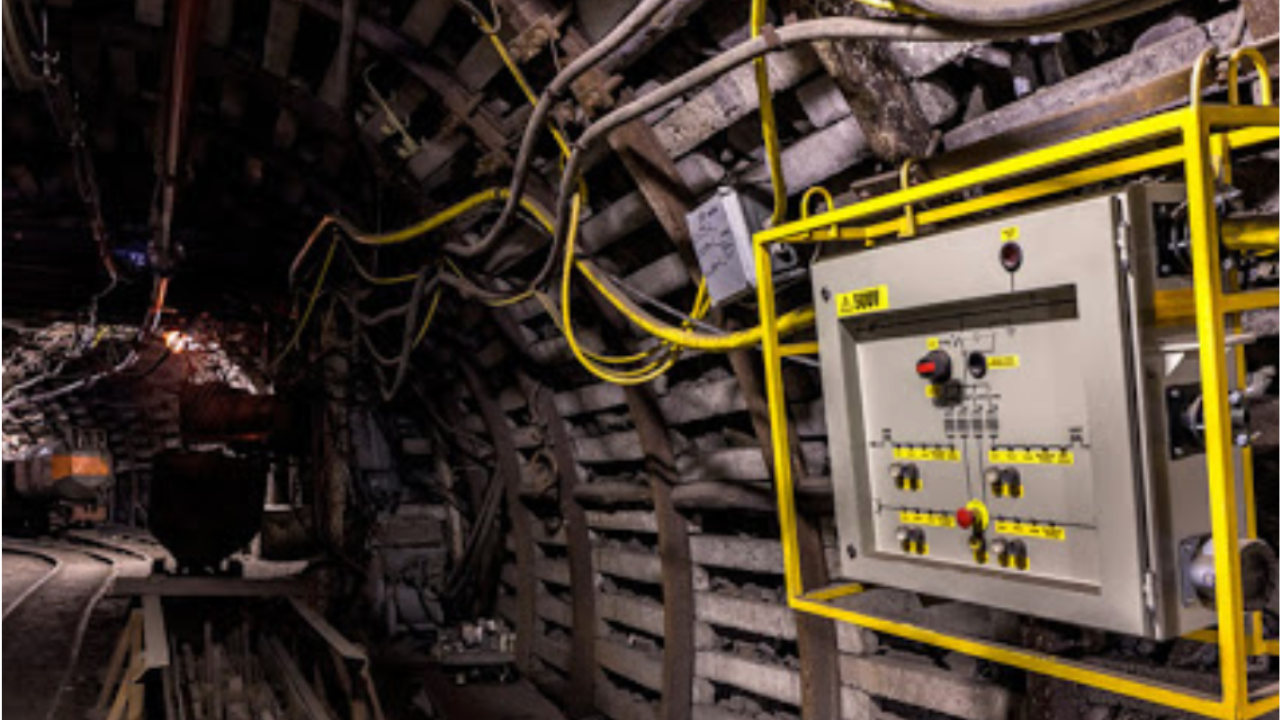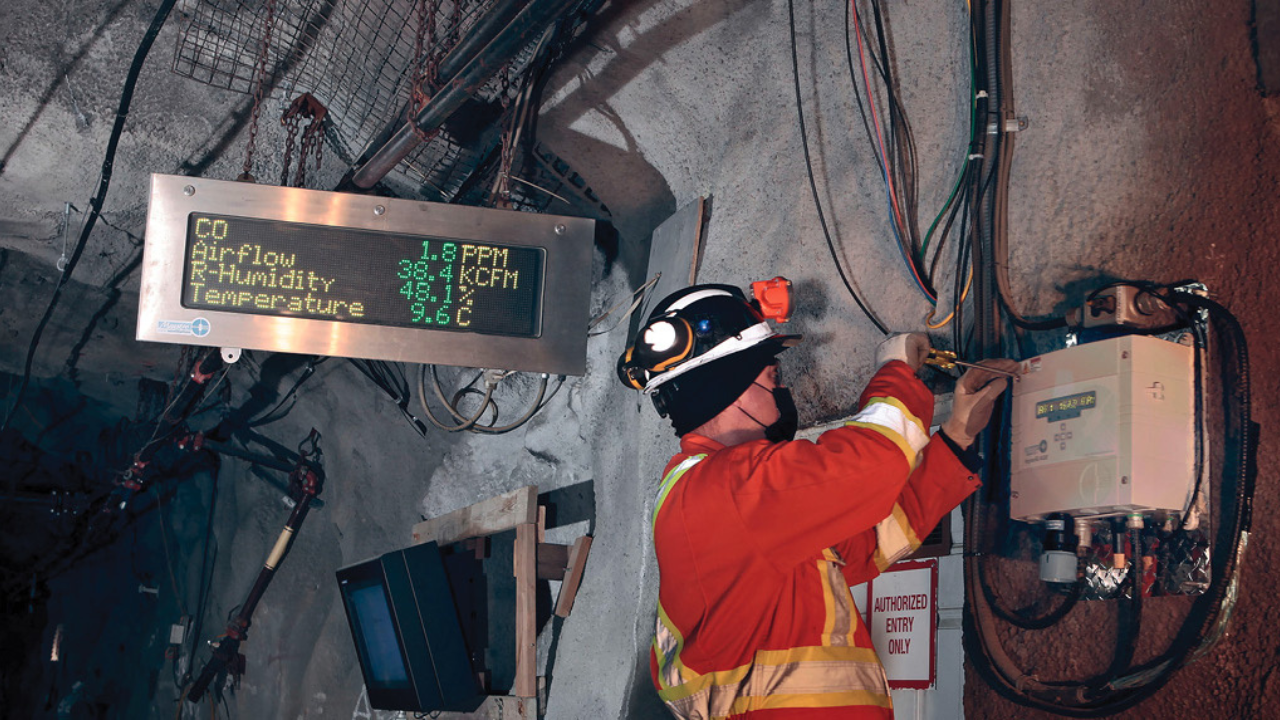Mining environments require resilient, robust and 100% compliant 電気筐体 for safety. Such enclosures feature unique construction design, and high quality material.
Maybe you are beginning to think of what exactly an electrical enclosure for mining looks like. Well, that is what we will explore here today.
What is Electrical Enclosure for Mining?

A mining electrical enclosure is a protective housing used in mining to enclose and protect electrical systems deployed in harsh conditions of mining environments.
These housings protect critical devices such as switches, circuit breakers, and control systems against dust, water, chemicals, impact, and even explosion-prone environments. They are constructed of non-corrosive metals or stronger composites and designed to last to mining grade durability.
Features of Electrical Enclosures for Mining Industry
· Secure Locking Mechanism
When you are installing electrical enclosures in mines, you will be more concerned with secure locking systems that will safeguard important equipment. These locks, commonly with chrome double bit or quarter turn keys, can resist unauthorized access ensuring safety and standards such as ネマ そして IP66.
If you want, you can have lockable hasps or combination locks. Their durable construction makes them difficult to tamper with, even under adverse environments, protecting parts such as switches and breakers. Inspect locks regularly to ensure security by checking the wear. Store lock keys with authorized personnel to avoid unintentional opening.
· Robust Construction
Mining electrical enclosures are subjected to harsh conditions, so you select a robust construction. These enclosures are typically manufactured out of 316 stainless steel or galvanized steel, making them resistant to corrosion, high temperatures, and mechanical stress. You make sure they are IP66 or NEMA 6P dust and watertight.
The rugged design absorbs mine vibrations and shocks that cannot harm the sensitive electronics. Pre-installation testing can be done to ensure structural integrity so as to avoid failures in explosive areas such as underground coal mines.
· Sloping Roof Design.
By choosing a sloping roof design, mining electrical enclosures, you avoid dust and debris and water accumulation. The roof is usually pitched between 30-380 o to ensure runoff to minimize maintenance and the possibility of explosion due to combustible dust. You admire its overhang, which protects pushbuttons against environmental abuse.
It is constructed using high-quality materials such as stainless steel, which improve durability. Look at the angle of roof, as it should suit Temperaments of your mine. Clean the roof frequently to ensure its efficiency, with no obstruction hindering its protective suitability.
· Improved Sealing
By fitting electrical enclosures in the mining sector with a better sealing, you provide a reliable protection against dust, water, and explosive gases. To get an IP66 or IP68 rating, you use high-quality gaskets, typically silicone or neoprene, and seal out fine coal dust or water jets. These seals provide a strong seal even in high-vibration applications, protecting delicate electronics within.
You look at smooth gasket procurement so as to avoid leakages. Examine seals to ensure integrity by periodically checking wear. Seal tests under simulated conditions, prior to installation, to prevent failures in explosive or wet mining environments.
· Thick Construction Material.
When you choose thick construction material in mining electrical enclosures, you are focusing on the durability to handle the harshest conditions. You select such materials as 12-gauge or heavier stainless steel or aluminum, which provide protection against corrosion and physical shocks. Confirm material thickness adheres to industry standards such as NEMA 4X.
· Heavy Duty & Robust Construction
If you select heavy-duty and durable construction of mining electrical enclosures, you create a fortress around your equipment. These enclosures are built with reinforced steel or aluminum to withstand severe vibrations and impacts as well as corrosive agents in mines. You make sure they are of high standards such as NEMA 6P submersion resistance.
It can carry mass elements without deasting. Select enclosures that have reinforced corners to make them stronger. Periodic monitoring of structural integrity to avoid electrical risks is also important to ensure the enclosure can be a consistent protector against harsh mining environments.
· Modular Design
By selecting a modular design of electrical enclosures in mining industry, you get the flexibility to meet the changing requirements. You build these enclosures with interchangeable panels, frames or compartments, and they are easily customized to fit particular equipment or needs. By fitting electrical enclosures in the mining sector with a better sealing, you provide a reliable protection against dust, water, and explosive gases.
To get an IP66 or IP68 rating, you use high-quality gaskets, typically silicone or neoprene, and seal out fine coal dust or water jets. These seals provide a strong seal even in high-vibration applications, protecting delicate electronics within. Seal tests under simulated conditions, prior to installation, to prevent failures in explosive or wet mining environments.
· Cooling System
By incorporating a cooling system in mining electrical enclosures, you prevent the overheating of sensitive electronics in hot dusty mines. To keep the inside temperatures optimal, you install fans, heat exchangers or air conditioners to ensure proper operation of components such as PLCs or inverters. These systems are enclosed and dustproof (IP66).
· Vibration Resistant
By choosing vibration-resistant electrical enclosures in mining, you can guarantee the reliability of equipment in the face of continuous movement of machinery. You select enclosures that have reinforced frames, shock-absorbing mounts or dampening systems to reduce the effect of vibration on internal components. Such designs qualify standards such as MIL-STD-810 for harsh environments, which safeguard against connections loosening or failing.

Best Material for Mining Control Boxes
· 316 Stainless Steel
Selecting 316ステンレス mining control boxes gives you a material that performs incredibly well in severe mining conditions. It has excellent resistance to corrosion caused by added molybdenum, which makes it last long in acidic and salty environments found in mines. Its rugged design can resist high temperatures, vibration, and shock, protecting delicate electronics such as PLCs or relays.
It is NEMA 4X and IP66 rated, making it resistant to dust and water intrusion, which is important in underground or open-pit applications. It is maintenance-free over a long period of time, but more expensive when compared to options such as aluminum.

Protection and Safety Rating to Mining Electrical Enclosures
· IP65 or IP66 Rating
With mining, you can opt to use IP65 or IP66-rated enclosures to assure strong protection. IP65 is resistant to dust and low pressure water jets, and IP66 is resistant to high pressure jets, useful in wet dusty mines. You protect delicate electronics against environmental stressors, improving reliability.
· NEMA Rated (4 and 4X or 7 and 9)
You specify NEMA 4, 4X, 7, or 9-rated enclosures to guard mining equipment. NEMA 4 and 4X are water and corrosion resistant, and 4X is also chemically resistant. NEMA 7 and 9 deal with explosive atmospheres, which are vital in volatile mines.
NEMA rating should be matched to the hazards of your mine. Routine check enclosure integrity to stop failures in hazardous areas.
· ATEX Compliance
By choosing ATEX-approved enclosures, you achieve safety in mining explosive areas. These enclosures are certified to use in areas where flammable gases or dust may be present and sparks or heat cannot ignite a hazard.
You comply with EU safety requirements, safeguarding both workers and equipment. Check zone certification prior to usage. Gas-tight seals should be tested regularly to ensure explosion-proof integrity.
· IECEx Compliance
You select IECEx certified enclosures to fit the international requirements of explosive atmospheres in mining. They are safer in explosive areas since the enclosures eliminate the risk of ignition caused by gases or dust. You count on their rigorous testing to be reliable.
Ensure IECEx certification is compatible with your site conditions. Examine enclosures to ensure they have not been damaged to ensure compliance and to avoid dangerous failures.
· UL Rating
In mining, UL-rated enclosures assure you of North American safety standards. Protection against environmental hazards and explosions is confirmed by UL listings, such as UL 50 or 1203. You rely on their strength with sensitive electronics.
Choose UL ratings that pertain to the needs of your mine. Look at the installation to maintain UL certification and prevent electrical hazards.
· Mine Safety and Health Administration Compliant
You choose MSHA approved enclosures to comply with the U.S. mining safety standards. They are explosion proof, water proof, and dust tight enclosures that keep workers safe in coal or metal mines. You observe high standards of reliability.
MSHA requirements, cross-check them on your operation. Carry out periodic checks to make sure that they are maintained to avoid fines or dangerous machine malfunctions.

How to Maintain Electrical Enclosure for Mining Industry
· Regular Cleaning to Eliminate Dust Build-up
To preserve your electrical enclosure in the mining sector, you emphasize frequent cleaning to remove the accumulation of dust. The dust that mining conditions, particularly coal or mineral mines, create is fine and may enter enclosures, posing a risk of short circuiting or overheating. The external surfaces and vents are cleaned with a damp cloth or compressed air, taking care that no dust gets introduced into sensitive parts.
· Inspecting Sealing
In maintaining your mining electrical enclosure, you check sealing to make sure that it is not affected and remains effective against dust, water, and gases. You examine gaskets and seals to ensure they are not cracked, worn, or compressed, particularly on IP66 or NEMA 4X enclosures, in order to retain their protective ratings. Should seals be damaged, you replace them immediately with materials specified by the manufacturer.
To extend the life of gaskets apply silicone lubricant. After replacement, test seals under simulated conditions to prove integrity to prevent explosive or wet mining environment failures. Scheduled seal inspections are safety and compliance essentials.
· Regular Inspection
You also perform frequent checks on your mining electrical enclosures to diagnose problems before they escalate. You check the enclosure itself to make sure there is no corrosion, dents, or loose parts, hinges, locks, and mounting bolts are tight. In the case of ATEX or IECEx certified units, you demonstrate explosion-proof integrity.
You also examine wear of internal wiring and components. Conduct inspections carefully by using a checklist monthly or according to the condition of each site. To prevent electrical shocks, de-energize the enclosure prior to inspection and record findings to fulfill MSHA or other regulation requirements to assure long-term reliability.

Uses of Electrical Enclosure in Mining Industry
· Protection of Control Systems
You protect control systems such as PLCs in mining with electrical enclosures to provide reliable operation against dust, moisture, and vibrations to manage equipment safely and efficiently.
· Power Distribution
You use enclosures to mount power distribution part to protect circuit breakers and wiring against the harsh mining environment to provide reliable power to machinery and processes.
· Instrumentation Housing
You protect delicate devices such as sensors and gauges in enclosures, keeping them safe dust and water, to ensure accurate data acquisition that is essential in the monitoring of the mining processes in a safe way.
· Explosion-Proof Applications
To prevent sparks causing explosions in potentially dangerous mining sections, you install explosion-proof enclosures to comply with ATEX/IECEx directives and keep workers safe.
· Communication Systems
You house communication devices such as radios or network devices in enclosures to ensure good connection in the dusty and wet mines to keep all operations coordinated and safe.
KDMSTEEL Electrical Enclosures for Mining
At KDMSTEEL, we offer a wide range of electrical enclosure for mining applications. Fabricated from high grade stainless steel, our mining electrical enclosures are designed to meet the high and dynamic industry requirements.
Whether you need our custom electrical enclosures or standard designs, our systems are fabricated to match specific needs of our clients – request for a catalog now.
結論
With a careful maintenance of your mining electrical enclosures, you increase both the life of the equipment and safety. Regular cleaning, sealing check and inspection will provide compliance and reliability in severe mining conditions, safeguarding both workers and operations.


